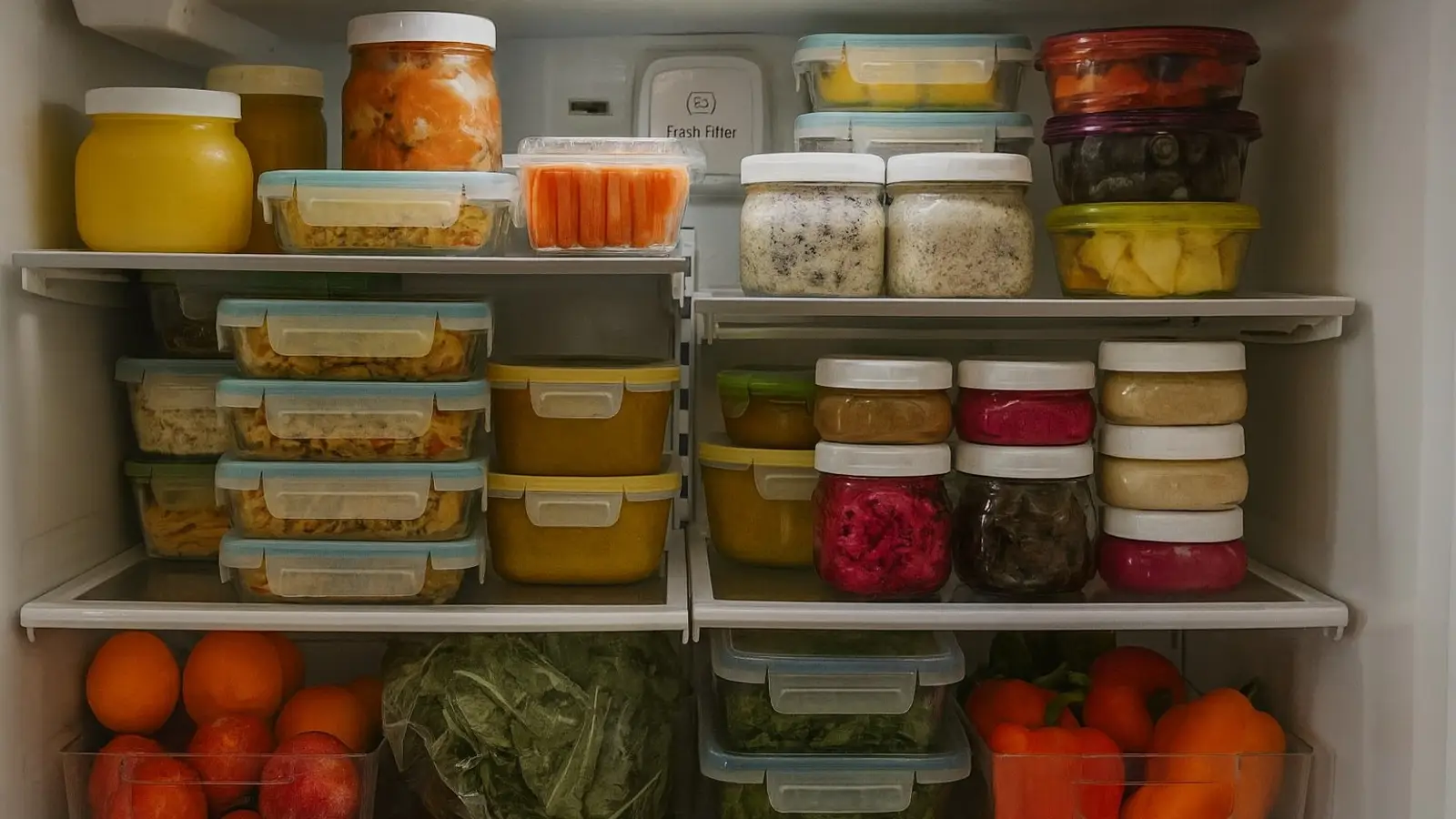How to Organize Your Fridge for Freshness and Less Waste
Discover simple fridge organization tips by temperature zones and packaging. Keep food fresh, reduce waste, and save money with smart storage habits.

Generated by Dall-e
A refrigerator is more than a household appliance — it’s the center of kitchen order, freshness, and even family budgeting. When chaos takes over inside, it can lead to spoiled food, wasted money, and unnecessary stress. Fortunately, keeping things under control doesn’t require much effort, just a few thoughtful habits.
Understanding Temperature Zones
Few people realize that the temperature inside a fridge isn’t the same everywhere. It shifts from shelf to shelf, and knowing these variations makes a big difference in how well food lasts.
The top shelf, hovering around +5 °C, is the best spot for items that don’t need intense cooling — leftovers, ready-made meals, sauces, or sealed drinks. Move down a level, and the middle shelf is slightly colder at about +3–4 °C. That’s the right environment for dairy products such as cottage cheese, yogurt, sour cream, as well as cheese, eggs, and cold cuts.
At the bottom, temperatures can drop to +1 °C, creating the coldest zone. Raw meat, fish, and seafood belong here, but they should be sealed tightly in containers or bags to keep odors from spreading and to avoid cross-contamination.
The drawers are designed for fruits and vegetables, with a slightly warmer range of +6–8 °C and higher humidity, which helps preserve their freshness longer. The door, however, is the warmest and most unstable area — up to +8 °C. That makes it suitable only for acidic or preserved items like mustard, ketchup, sauces, juices, or bottled drinks.
Packaging Makes a Difference
Leaving food in open packaging is a recipe for mess and faster spoilage. Transferring it into glass jars or plastic containers with lids keeps the fridge tidy and prevents odors from mixing. Wrapping items in foil or film also works, though labeling them is a smart way to track freshness.
If available, vacuum-sealed bags or containers are especially effective, particularly for meat and fish stored for several days or placed in the freezer.
What Doesn’t Belong in the Fridge
Not every product benefits from cold storage. Bread, for instance, hardens quickly, while potatoes turn sweet and lose texture. Tomatoes, cucumbers, bananas, eggplants, and garlic also suffer in low temperatures.
Onions, too, fare poorly in the fridge, where they become damp and may rot. Room temperature and paper bags suit them far better.
Order Means Less Waste
Cleanliness is just as important as placement. A quick check once a week — tossing spoiled items and wiping shelves — helps maintain hygiene and keeps track of what’s on hand.
Transparent organizers or baskets make grouping easier: one for dairy, another for breakfast items, and so on. Families may find it useful to label shelves or containers by type or even by name.
Another simple trick: keep newer products at the back and move those nearing their expiration date to the front. This small step reduces the chance of food being forgotten and thrown away.
